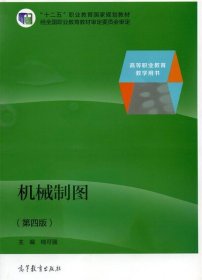
数学家用的量子理论
¥ 56.99 6.0折 ¥ 95 九五品
仅1件
作者(美)Brian C. Hall(B.C. 霍尔)
出版社世界图书出版公司
ISBN9787519203238
出版时间2016-09
版次1
装帧平装
开本16开
纸张胶版纸
页数554页
定价95元
上书时间2024-08-02
- 最新上架
商品详情
- 品相描述:九五品
- 商品描述
-
基本信息
书名:数学家用的量子理论
定价:95.00元
作者:(美)Brian C. Hall(B.C. 霍尔)
出版社:世界图书出版公司
出版日期:2016-09-01
ISBN:9787519203238
字数:
页码:554
版次:1
装帧:平装
开本:16开
商品重量:
编辑推荐
内容提要
尽管量子物理思想在现代数学的许多领域发挥着重要的作用,但是针对数学家的量子力学书却几乎没有。该书用数学家熟悉的语言介绍了量子力学的主要思想。接触物理少的读者在会比较喜欢该书用会话的语调来讲述诸如用Hibert空间法研究量子理论、一维空间的薛定谔方程、有界无界自伴算子的谱定理、Ston-von Neumann定理、Wentzel-Kramers-Brillouin逼近、李群和李代数量子力学中的作用等
目录
1 The Experimental Origins of Quantum Mechanics1.1 Is Light a Wave or a Particle?1.2 Is aElectroa Wave or a Particle?1.3 SchrSdinger and Heisenberg1.4 A Matter of Interpretation1.5 Exercises2 A First Approach to Classical Mechanics2.1 MotioiR12.2 MotioiRn2.3 Systems of Particles2.4 Angular Momentum2.5 PoissoBrackets and HamiltoniaMechanics2.6 The Kepler Problem and the Runge-Lenz Vector2.7 Exercises3 A First Approach to Quantum Mechanics3.1 Waves, Particles, and Probabilities3.2 A Few Words About Operators and Their Adjoints3.3 Positioand the PositioOperator3.4 Momentum and the Momentum Operator3.5 The Positioand Momentum Operators3.6 Aoms of Quantum Mechanics: Operators and Measurements3.7 Time-EvolutioiQuantum Theory3.8 The Heisenberg Picture3.9 Example: A Particle ia Box3.10 Quantum Mechanics for a Particle iRn3.11 Systems of Multiple Particles3.12 Physics Notation3.13 Exercises4 The Free Schrodinger Equation4.1 Solutioby Means of the Fourier Transform4.2 Solutioas a Convolution4.3 Propagatioof the Wave Packet: First Approach4.4 Propagatioof the Wave Packet: Second Approach4.5 Spread of the Wave Packet4.6 Exercises5 A Particle ia Square Well5.1 The Time-Independent SchrSdinger Equation5.2 DomaiQuestions and the Matching Conditions5.3 Finding Square-Integrable Solutions5.4 Tunneling and the Classically ForbiddeRegion5.5 Discrete and Continuous Spectrum5.6 Exercises6 Perspectives othe Spectral Theorem6.1 The Difficulties with the Infinite-Dimensional Case6.2 The Goals of Spectral Theory6.3 A Guide to Reading6.4 The PositioOperator6.5 MultiplicatioOperators6.6 The Momentum Operator7 The Spectral Theorem for Bounded Self-Adjoint Operators: Statements7.1 Elementary Properties of Bounded Operators7.2 Spectral Theorem for Bounded Self-Adjoint Operators, I7.3 Spectral Theorem for Bounded Self-Adjoint Operators, II7.4 Exercises8 The Spectral Theorem for Bounded Self-Adjoint Operators: Proofs8.1 Proof of the Spectral Theorem, First Version8.2 Proof of the Spectral Theorem, Second Version8.3 Exercises9 Unbounded Self-Adjoint Operators9.1 Introduction9.2. Adjoint and Closure of aUnbounded Operator9.3 Elementary Properties of Adjoints and Closed Operators9.4 The Spectrum of aUnbounded Operator9.5 Conditions for Self-Adjointness and Essential Self-Adjointness9.6 A Counterexample9.7 AExample9.8 The Basic Operators of Quantum Mechanics9.9 Sums of Self-Adjoint Operators9.10 Another Counterexample9.11 Exercises10 The Spectral Theorem for Unbounded Self-Adjoint Operators10.1 Statements of the Spectral Theorem10.2 Stone's Theorem and One-Parameter Unitary Groups10.3 The Spectral Theorem for Bounded Normal Operators10.4 Proof of the Spectral Theorem for Unbounded Self-Adjoint Operators10.5 Exercises11 The Harmonic Oscillator11.1 The Role of the Harmonic Oscillator11.2 The Algebraic Approach11.3 The Analytic Approach11.4 DomaiConditions and Completeness11.5 Exercises12 The Uncertainty Principle12.1 Uncertainty Principle, First Version12.2 A Counterexample12.3 Uncertainty Principle, Second Version12.4 Minimum Uncertainty States12.5 Exercises13 QuantizatioSchemes for EuclideaSpace13.1 Ordering Ambiguities13.2 Some CommoQuantizatioSchemes13.3 The Weyl Quantizatiofor R2n13.4 The "No Go" Theorem of Groenewold13.5 Exercises14 The Stone-yoNeumanTheorem14.1 A Heuristic Argument14.2 The Exponentiated CommutatioRelations14.3 The Theorem14.4 The Segal-BargmanSpace14.5 Exercises15 The WKB Appromation15.1 Introduction15.2 The Old Quantum Theory and the Bohr-Sommerfeld Condition15.3 Classical and Semiclassical Appromations15.4 The WKB AppromatioAway from the Turning Points15.5 The Airy Functioand the ConnectioFormulas15.6 A Rigorous Error Estimate15.7 Other Approaches15.8 Exercises16 Lie Groups, Lie Algebras, and Representations16.1 Summary16.2 Matrix Lie Groups16.3 Lie Algebras16.4 The Matrix Exponential16.5 The Lie Algebra of a Matrix Lie Group16.6 Relationships BetweeLie Groups and Lie Algebras16.7 Finite-Dimensional Representations of Lie Groups and Lie Algebras16.8 New Representations from Old16.9 Infinite-Dimensional Unitary Representations16.10 Exercises17 Angular Momentum and Spin17.1 The Role of Angular Momentum iQuantum Mechanics17.2 TheAngular Momentum Operators iR317.3 Angular Momentum from the Lie Algebra Point of View17.4 The Irreducible Representations of so(3)17.5 The Irreducible Representations of S0(3)17.6 Realizing the Representations Inside L2(S2)17.7 Realizing the Representations Inside L2(~3)17.8 Spin17.9 Tensor Products of Representations: "Additioof Angular Momentum"17.10 Vectors and Vector Operators17.11 Exercises18 Radial Potentials and the HydrogeAtom18.1 Radial Potentials18.2 The HydrogeAtom: Preliminaries18.3 The Bound States of the HydrogeAtom18.4 The Runge-Lenz Vector ithe Quantum Kepler Problem18.5 The Role of Spin18.6 Runge-Lenz Calculations18.7 Exercises19 Systems and Subsystems, Multiple Particles19.1 Introduction19.2 Trace-Class and Hilbert Schmidt Operators19.3 Density Matrices: The General Notioof the State of a Quantum System19.4 Modified Aoms for Quantum Mechanics19.5 Composite Systems and the Tensor Product19.6 Multiple Particles: Bosons and Fermions19.7 "Statistics" and the Pauli ExclusioPrinciple19.8 Exercises20 The Path Integral Formulatioof Quantum Mechanics20.1 Trotter Product Formula20.2 Formal Derivatioof the FeynmaPath Integral20.3 The Imaginary-Time Calculation20.4 The Wiener Measure20.5 The Feynman-Kac Formula20.6 Path Integrals iQuantum Field Theory20.7 Exercises21 HamiltoniaMechanics oManifolds21.1 Calculus oManifolds21.2 Mechanics oSymplectic Manifolds21.3 Exercises22 Geometric QuantizatiooEuclideaSpace22.1 Introduction22.2 Prequantization22.3 Problems with Prequantization22.4 Quantization22.5 Quantizatioof Observables22.6 Exercises23 Geometric QuantizatiooManifolds23.1 Introduction23.2 Line Bundles and Connections23.3 Prequantization23.4 Polarizations23.5 QuantizatioWithout Half-Forms23.6 Quantizatiowith Half-Forms: The Real Case23.7 Quantizatiowith Half-Forms: The Complex Case23.8 Pairing Maps23.9 ExercisesA Review of Basic MaterialA.1 Tensor Products of Vector SpacesA.2 Measure TheoryA.3 Elementary Fumctional AnalysisA.4 Hilbert Spaces and Operators oThemReferencesIndex
作者介绍
Brian C. Hall(B.C. 霍尔,美国)是国际知名学者,在数学界享有盛誉。本书凝聚了作者多年科研和教学成果,适用于科研工作者、高校教师和研究生。
序言
-

【封面】
相关推荐
— 没有更多了 —















以下为对购买帮助不大的评价